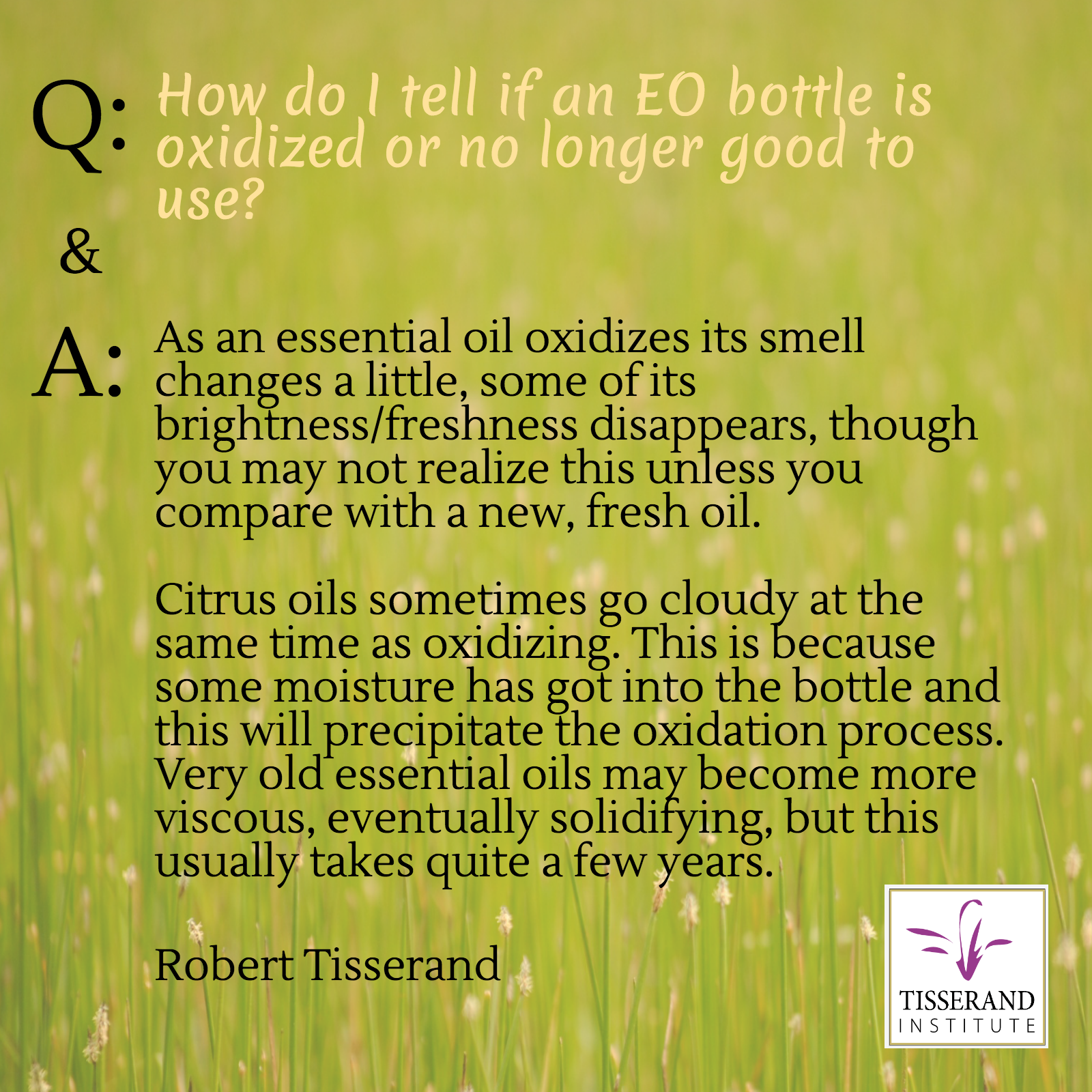Tuesday Q&A!
Question (by Ann Jennerjahn): How do I tell if an EO bottle is oxidized, or no longer good to use?
Answer: Eventually, all essential oils degrade and the main direct cause of this is a process called oxidation; essential oil constituents combine with atmospheric oxygen causing negative chemical changes. For example, oxides and peroxides are often formed (such as limonene-2-hydroperoxide, which is formed from limonene) and these “oxidation products” are not nice compounds – they tend to be slightly toxic and to increase the risk of adverse skin reactions.
The oxidation process alters the perceptible odor of the oil, also sometimes its viscosity, and always its therapeutic potency, which reduces correspondingly. The good news is, it’s a very slow process. Most essential oils keep well for at least 1-2 years before oxidation starts to take effect. So if you’re using up your essential oils within 6-12 months of purchase anyway, this is mostly a non-issue. Incidentally, vegetable oils also oxidize, and we call this “going rancid”.
As an essential oil oxidizes its smell changes a little, some brightness/freshness disappears, though you may not realize this unless you compare with a new, fresh oil. Citrus oils sometimes go cloudy at the same time as oxidizing. This is because some moisture has got into the bottle and this will precipitate the oxidation process. Very old essential oils may become more viscous, eventually solidifying, but this usually takes quite a few years.
Oxidation is encouraged by three factors: heat, light, and moisture. So note these tips:
• Keep your essential oils away from direct sunlight
• Do not leave caps off bottles for prolonged periods of time
• The more air there is in the bottle the faster the oil will oxidize
• Keeping oils refrigerated will about double their useful lifespan
For more on keeping your oils cool, see this post: http://roberttisserand.com/…/lemon-on-the-rockskeep-your-e…/ If you are concerned at all, do note the date that you either purchased or first opened the bottle, and consult a chart such as the one in this blog post which I had a hand in creating https://www.planttherapy.com/…/05/28/do-essential-oils-exp…/
These are only rough guidelines, and there is a wide variation in the likely shelf life of different oils ranging from 1 to several years. Finally, oxidation does not vary with brand – it happens because of the constituents of the essential oil; and because in nature, everything degrades, eventually.


I just had a thought; I was looking for a way to use a St. John’s Wort in oil that has gone bad and I thought of pouring it around the house outside for an insect repellent. Then I wouldn’t be wasting it.
I read your article and I appreciate the information/link for keeping my oils cool. Thank you